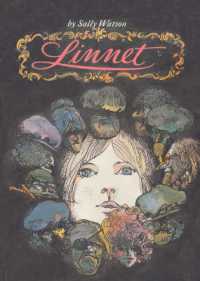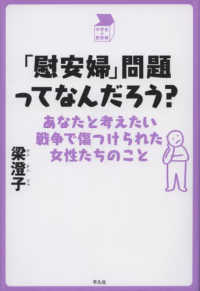- ホーム
- > 洋書
- > 英文書
- > Cinema / Film
Full Description
Films produced in late 1960s and early 1970s America--along with later films focusing on that period--continue to frame our understanding of the counterculture era. The popular and experimental music of the day is central to the counterculture narrative on film, from the utopian Monterey Pop (1968) to the disenchantment of Gimme Shelter (1970). But the musical side of the movement was not monolithic, and a study of contemporary film soundtracks reveals a great deal of complexity. The coinciding struggles to define collective and individual identities based on race, class, gender and generation are well documented in the music of counterculture cinema.
Contents
Table of Contents
Acknowledgments
Introduction
1. Framing Utopia: Monterey Pop and the Heart of the Counterculture
2. Creating the Downfall: Gimme Shelter and the "End" of the Counterculture
3. Searching for the Real Times, Baby: Head and the Unmaking of the Monkees
4. Love in Counterculture Film: Music's Diplomatic Role in Harold and Maude
5. Space Is the Place: Barbarella and Hearing the Future
6. Did the Soundtrack Also Blow It?: Using Rock to Capture Counterculture Generational Identity
7. Setting the Escapist Scene with Music: Sex and Comedy in an Exotic World
8. Generational Genocide: Selling Youth Rebellion in Roger Corman's Gas-s-s-s
9. African American Artists in Hollywood: Isaac Hayes' Contribution to Shaft
10. I'm Watching It for Its Music: Deep Throat and Its Soundtrack
11. Challenging Normativity and Pushing Boundaries: Midnight Cowboy and Cultural Resistance
12. Ambiguous Meaning of Music: Combining Technology and Music in the Dystopian World of A Clockwork Orange
13. Understanding Country Ways: A Talk with Country Joe McDonald About Counterculture Film
14. Bringing the 1960s to Life: An Interview with Director Robert Greenwald
Coda
Works Cited
Index








